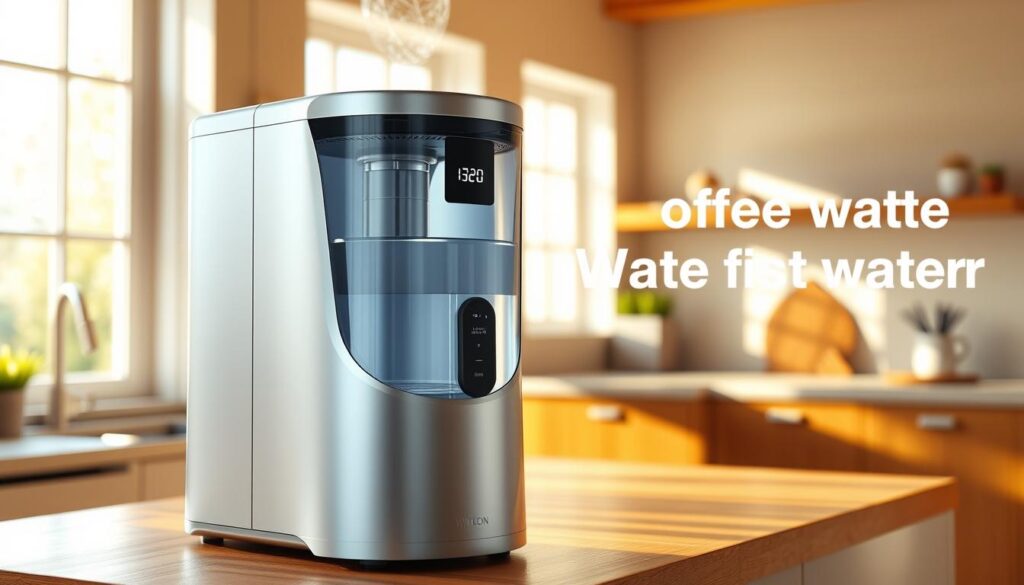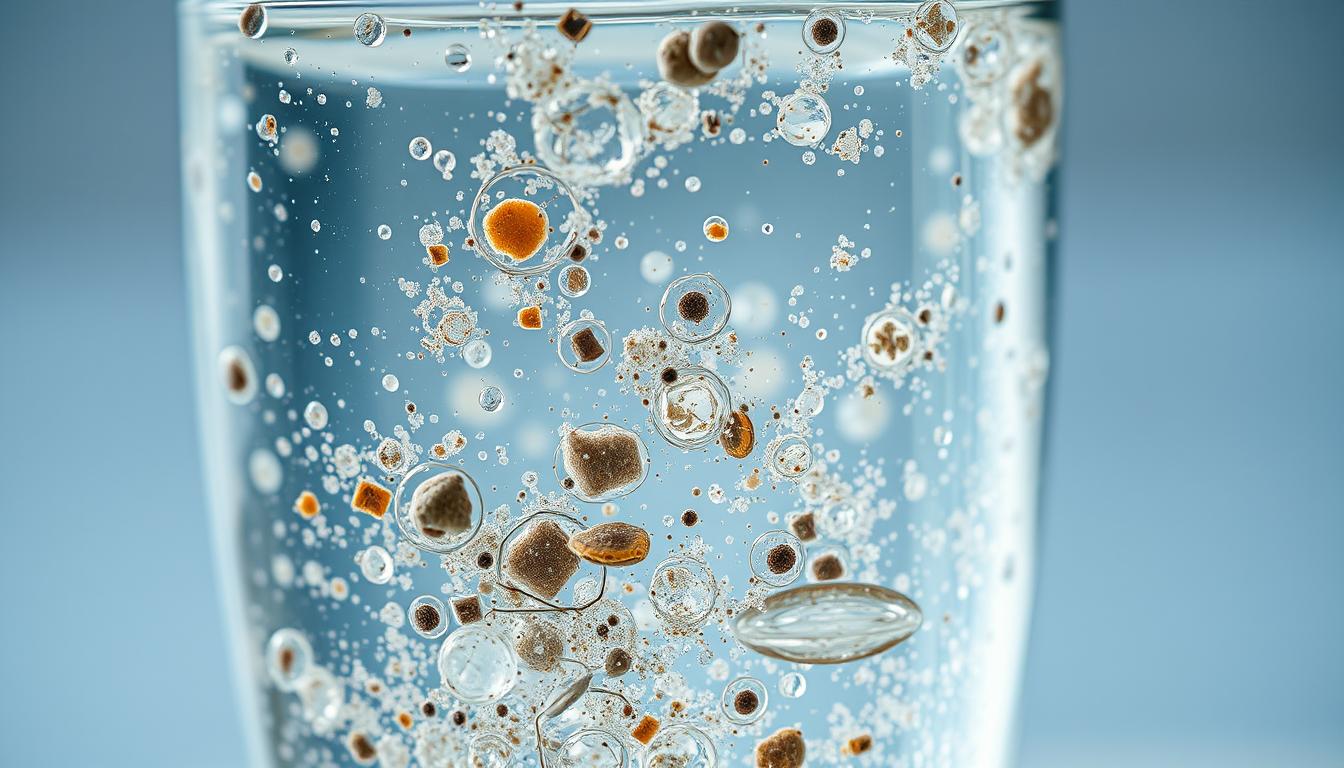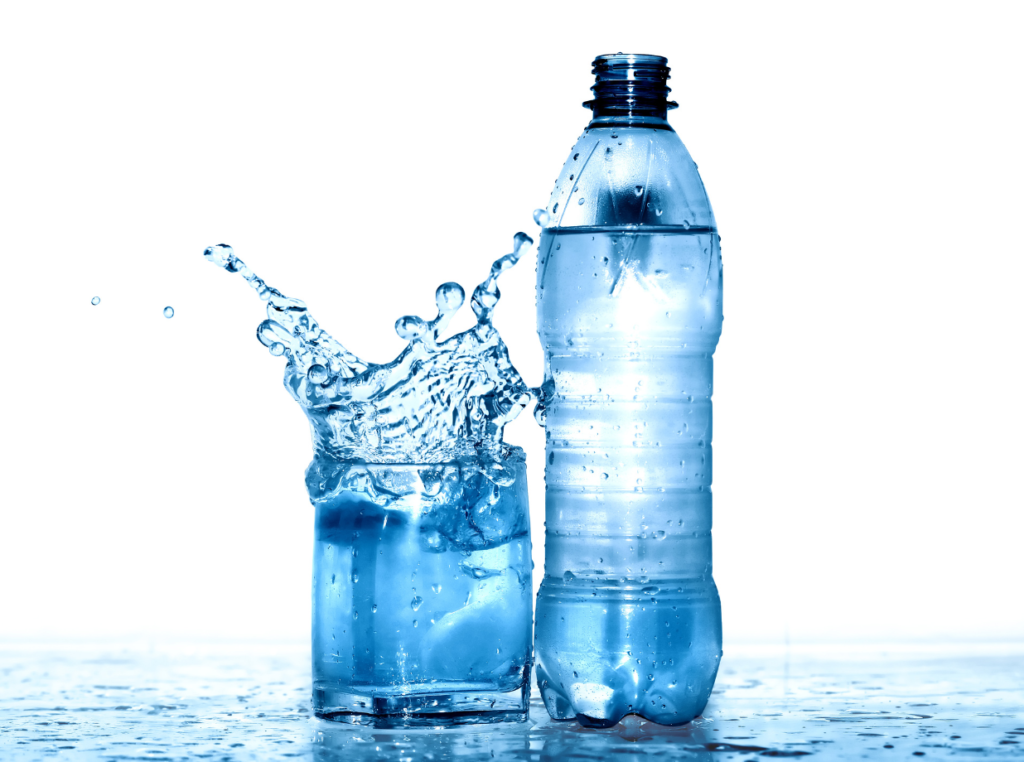Is your tap water safe to drink? With growing concerns over contaminants in municipal water supplies, many are left wondering if their tap water is truly clean.
Tap water contaminants can range from chlorine and lead to bacteria and viruses, posing serious health risks.
A water distiller can be a reliable solution, removing impurities and providing clean drinking water. But how do you know if you need one?
Key Takeaways
- Identify common tap water contaminants.
- Understand the benefits of using a water distiller.
- Recognize the signs that indicate the need for a water distiller.
- Learn how a water distiller works.
- Discover the health benefits of distilled water.
The Hidden Truth About Your Tap Water
Despite strict regulations, tap water can still contain a range of contaminants that impact your health and wellbeing. The quality of tap water varies significantly across the United States, making it essential to understand what’s in your water.
Common Contaminants Found in U.S. Tap Water
Tap water can be contaminated with various substances, including:
- Heavy metals like lead and mercury
- Bacteria and viruses
- Pesticides and herbicides
- Industrial chemicals and pollutants
These contaminants can enter the water supply through various means, such as aging infrastructure, agricultural runoff, and industrial waste.
How Water Regulations May Not Be Enough
While the Safe Drinking Water Act sets standards for drinking water, it may not be enough to ensure clean drinking water. Regulations can be slow to adapt to new contaminants, and enforcement can be inconsistent. As a result, many water utilities may not be meeting the highest standards for water quality.
Using a water distiller can be an effective way to remove contaminants and improve water quality. By understanding the hidden truth about tap water, you can take steps to protect your health and wellbeing.
Understanding Water Distillation: How It Works
Understanding how water distillation works is crucial for appreciating its benefits in water purification. Water distillation is a simple, effective method that involves turning contaminated water into steam, which is then condensed back into liquid form, free from many contaminants.
The Science Behind Water Distillation
Water distillation works on the principle that water evaporates at a lower temperature than many contaminants. When water is heated to produce steam, many impurities are left behind because they have higher boiling points. The steam is then cooled and condensed back into liquid water, resulting in a purified product. This process effectively removes a wide range of contaminants, including heavy metals, bacteria, and viruses.
Comparing Distillation to Other Purification Methods
Unlike filtration, which may leave behind dissolved solids, distillation is highly effective at removing a broad spectrum of contaminants. While methods like reverse osmosis or UV treatment have their advantages, distillation stands out for its simplicity and effectiveness. It’s particularly beneficial for removing contaminants that other methods might miss, making it a comprehensive water purification method.
In summary, water distillation offers a reliable means of purifying water, leveraging the physical properties of water and its contaminants to produce clean drinking water. Its effectiveness against a wide range of contaminants makes it a valuable purification technique for households and communities.
Signs You Need a Water Distiller (And Why Tap Water Isn’t Enough)
There are several indicators that suggest you need a more reliable water purification method. While tap water is treated, it can still contain various contaminants that affect its quality and safety.
Overview of Warning Signs
Some common warning signs that your tap water is not safe include unusual taste or odor, visible particles or cloudiness, recurring plumbing issues, health concerns, and living in an area known for water quality issues. These signs indicate potential problems with your tap water that a water distiller can address.
Why Filtration Alone May Not Solve Your Problems
Filtration is a common method used to purify water, but it may not remove all contaminants. Some filters may not capture dissolved solids, bacteria, or viruses. A water distiller, on the other hand, can remove virtually all impurities by turning water into vapor and then condensing it back into liquid form.
Key benefits of using a water distiller include:
- Removal of dissolved solids and other impurities
- Elimination of bacteria and viruses
- Improved taste and odor
When to Consider Upgrading Your Water Purification System
If you notice any of the warning signs mentioned, it might be time to consider upgrading to a water distiller. This is especially true if you have recurring health issues or if you live in an area with known water quality problems. Upgrading can provide you with cleaner, safer drinking water and potentially improve your overall health.
By understanding the signs that indicate the need for a water distiller, you can take a proactive step towards ensuring your drinking water is of the highest quality. The health benefits of distilled water are numerous, making the investment in a water distiller a worthwhile consideration for many households.
Sign #1: Unusual Taste or Odor in Your Water
Tap water with an off taste or smell is often a red flag for contamination. While it’s normal for tap water to have some taste or odor due to the treatment process, a persistent or strong unpleasant taste or smell can indicate a problem.
Common Taste and Odor Issues
Common issues include a chlorine-like taste from disinfection, earthy or musty smells from algae or bacteria, and metallic tastes from corroded pipes. These issues can be due to various factors, including:
- Presence of organic matter or algae
- Corrosion of pipes and plumbing fixtures
- Inadequate water treatment processes
What These Sensory Problems Indicate About Water Quality
Unusual tastes or odors can signal the presence of contaminants or impurities in the water. For instance, a strong chlorine smell might indicate over-chlorination, while an earthy smell could suggest the presence of certain bacteria or algae. When to consider a water distiller is when these issues persist despite other filtration methods.
Considering a water distiller can be a proactive step towards ensuring your drinking water is clean and safe. If you’re experiencing persistent taste or odor issues, it may be time to explore signs you need a water distiller.
Sign #2: Visible Particles or Cloudiness
The presence of visible particles or cloudiness in your tap water is a significant sign that you need to assess its quality. This issue can be attributed to various factors, including sediment, particulate matter, or other contaminants.
Visible particles or cloudiness, also known as turbidity, can be caused by a range of substances, including dirt, silt, or even microorganisms. Understanding the source of this turbidity is crucial in determining the appropriate course of action.
Understanding Turbidity and Sediment
Turbidity refers to the cloudiness or haziness of a fluid caused by large numbers of individual particles that are generally invisible to the naked eye. Sediment, on the other hand, refers to the particles that have settled to the bottom of a container. Both turbidity and sediment can be indicative of the presence of contaminants in your tap water.
Some common causes of turbidity include:
- Heavy rainfall or flooding, which can stir up sediment in water sources
- Aging infrastructure, which can lead to the presence of particulate matter
- Contamination from agricultural runoff or industrial activities
| Cause | Effect on Water Quality | Potential Health Risk |
|---|---|---|
| Heavy Rainfall | Increased turbidity due to sediment | Potential presence of pathogens |
| Aging Infrastructure | Presence of particulate matter | Increased risk of gastrointestinal issues |
| Agricultural Runoff | Contamination with chemicals or pathogens | Risk of chemical exposure or infection |
Health Implications of Particulate Matter
The health implications of consuming water with particulate matter or turbidity can be significant. Particulate matter can include a range of substances, from harmless sediment to harmful pathogens or chemicals.
Consuming contaminated water can lead to a variety of health issues, including gastrointestinal problems, reproductive issues, or even increased risk of certain cancers. Therefore, it’s crucial to address the issue of turbidity and sediment in your tap water.
Improving water quality involves not just addressing the symptoms but also the root causes. Using a water distiller can be an effective way to remove particulate matter and other contaminants, ensuring that your drinking water is safe and clean.
Sign #3: Recurring Plumbing Issues and Mineral Buildup
Recurring plumbing problems can be a frustrating and costly issue, but did you know that your tap water might be the culprit? Many homeowners struggle with hard water, which can lead to mineral buildup and damage to their plumbing systems. Understanding the connection between your tap water and plumbing issues is crucial to finding a solution.
How Hard Water Affects Your Home
Hard water contains high levels of minerals such as calcium and magnesium, which can cause scaling and buildup in your pipes. This can lead to reduced water pressure, increased energy bills, and even premature wear on your appliances. The use of a water distiller can help alleviate these issues by removing minerals that cause hard water. By switching to distilled water, you can protect your plumbing system and extend the lifespan of your appliances.

The Connection Between Plumbing Problems and Water Quality
The quality of your tap water is directly linked to the health of your plumbing system. Poor water quality can lead to corrosion, scaling, and other issues that can cause significant damage over time. “The quality of your water can have a significant impact on your plumbing system, and using a water distiller can be a proactive step in maintaining your home’s infrastructure.” By addressing the root cause of your plumbing issues, you can avoid costly repairs and ensure the longevity of your plumbing system.
Using a water distiller can provide numerous benefits, including reducing mineral buildup and alleviating the strain on your plumbing system. This can lead to cost savings and a reduced risk of plumbing-related issues. As a homeowner, understanding the reasons for using a water distiller can help you make an informed decision about your water quality.
Sign #4: Health Concerns and Unexplained Symptoms
If you’re experiencing persistent health issues without a clear cause, your tap water might be the culprit. Certain contaminants in tap water can lead to a range of health problems, from mild discomfort to serious illnesses.
Tap water can contain various contaminants, including heavy metals, bacteria, viruses, and chemical residues. These contaminants can cause a variety of health issues, such as gastrointestinal problems, skin irritations, and even neurological effects.
Water Contaminants and Their Health Effects
Some common contaminants found in tap water include:
- Lead and other heavy metals, which can cause neurological damage and developmental issues.
- Bacteria and viruses, which can lead to gastrointestinal illnesses and other infections.
- Chemical residues, such as pesticides and industrial chemicals, which have been linked to various health problems, including cancer and reproductive issues.
Understanding the potential health effects of these contaminants is crucial in determining whether your tap water is making you sick.
When to Suspect Your Water Is Making You Sick
If you’re experiencing unexplained symptoms such as:
- Recurring stomach issues
- Skin rashes or irritations
- Frequent headaches or fatigue
it may be worth investigating the quality of your tap water. Consider getting your water tested for common contaminants and looking into a water distiller as a potential solution.
Switching to distilled water can help alleviate health concerns related to tap water contaminants. Distilled water is free from many of the impurities found in tap water, providing a cleaner and healthier drinking option.
Sign #5: Living in an Area with Known Water Quality Issues
Known water quality issues in your area can be a significant indicator that it’s time to switch to distilled water. If you reside in a region with a history of tap water contamination, a water distiller can provide peace of mind and cleaner drinking water.
High-Risk Regions in the United States
Some areas in the United States are more prone to tap water contaminants due to various factors such as aging infrastructure, agricultural runoff, or industrial pollution. For instance, regions with high levels of arsenic, lead, or fluoride in their water supply are considered high-risk. States like Flint, Michigan, and areas near industrial sites are examples where water quality has been a significant concern.
- Regions near industrial or agricultural areas
- Areas with aging water infrastructure
- Places with known contaminant issues (e.g., lead, arsenic)
How to Research Your Local Water Quality
To determine if you live in a high-risk area, you can start by researching your local water quality. Check the Consumer Confidence Report (CCR) provided by your water utility company, which details the contaminants found in your tap water. You can also visit websites like the Environmental Working Group’s Tap Water Database to get more information about your local water quality.
By being informed about your tap water contaminants, you can make a more educated decision about whether you need a water distiller.
The Health Benefits of Switching to Distilled Water
Distilled water offers numerous health benefits that can improve your overall well-being. By removing contaminants and impurities, distilled water provides a clean and safe drinking option. This section will explore the advantages of switching to distilled water, focusing on both immediate and long-term health improvements.
Short-Term Improvements You Might Notice
Switching to distilled water can lead to several short-term health benefits. One of the most noticeable improvements is in the taste and odor of the water, making hydration more enjoyable. Additionally, distilled water can help reduce the occurrence of certain health issues related to water contaminants.
Some of the short-term benefits include:
- Improved hydration due to better taste
- Reduced exposure to waterborne contaminants
- Potential decrease in gastrointestinal issues

Long-Term Health Advantages
The long-term health advantages of drinking distilled water are significant. By consistently consuming water that is free from contaminants, individuals can reduce their risk of developing certain health conditions. For instance, avoiding heavy metals and other pollutants can lead to better overall health.
A comparison of the health benefits of distilled water versus tap water is presented in the following table:
| Health Benefit | Distilled Water | Tap Water |
|---|---|---|
| Removal of Contaminants | Effective removal of heavy metals and pollutants | May contain contaminants like lead and chlorine |
| Hydration Quality | Improved taste and purity | Variable taste and quality |
| Long-Term Health Impact | Reduced risk of certain health conditions | Potential health risks due to contaminants |
By understanding the benefits of distilled water, individuals can make informed decisions about their drinking water choices, potentially leading to improved health and well-being.
Choosing the Right Water Distiller for Your Home
With numerous water distillers available, choosing the right one requires consideration of several key factors. The process involves understanding your household’s specific needs and preferences to select a distiller that not only provides clean drinking water but also fits seamlessly into your lifestyle.
Key Features to Consider
When selecting a water distiller, several features are crucial. Capacity is one; you’ll want a distiller that can produce enough water for your daily needs. Speed is another factor, as some distillers can take several hours to produce a single gallon. Additionally, consider the maintenance requirements, including how often you’ll need to clean and replace parts. Some models come with features like automatic shut-off and digital controls, which can enhance user experience.
Countertop vs. Whole-House Systems
Deciding between countertop and whole-house water distillers depends on your specific needs. Countertop distillers are compact, portable, and generally more affordable, making them ideal for smaller households or those on a budget. On the other hand, whole-house systems provide comprehensive water purification, treating all the water in your home, which is beneficial for households with multiple occupants or for those who want to ensure all their water, not just drinking water, is purified.
Budget Considerations and Return on Investment
Budget is a significant factor when choosing a water distiller. While the initial cost is important, it’s also crucial to consider the long-term costs, including energy consumption, maintenance, and replacement parts. Many homeowners find that the benefits of a water distiller, including improved health and reduced reliance on bottled water, provide a significant return on investment over time.
Maintaining Your Water Distiller for Optimal Performance
A well-maintained water distiller is essential for optimal performance and health benefits. To ensure your water distiller continues to provide clean drinking water, regular maintenance is necessary.
Cleaning and Maintenance Schedule
Regular cleaning and maintenance are vital to prevent the buildup of contaminants and scale. It’s recommended to clean the distiller every 1-3 months, depending on usage. Descale the distiller as per the manufacturer’s instructions to remove mineral deposits.
| Maintenance Task | Frequency |
|---|---|
| Cleaning the distiller | Every 1-3 months |
| Descaling | As per manufacturer’s instructions |
| Replacing filters | Every 6-12 months |
Troubleshooting Common Issues
Despite regular maintenance, issues may arise. Common problems include reduced water flow or unusual tastes and odors. Refer to the user manual or contact the manufacturer for troubleshooting guides. Regularly checking and replacing worn-out parts can help prevent more significant issues.
Conclusion: Taking Control of Your Water Quality
Now that you’re aware of the Signs You Need a Water Distiller, it’s time to take action. Tap water troubles can be a significant concern, affecting not just the taste and odor but also your health and home appliances. By understanding when to consider a water distiller, you can make an informed decision to improve your drinking water quality.
Switching to a water distiller can bring numerous benefits, from removing contaminants and minerals that cause plumbing issues to improving your overall health. By distilling your water, you ensure that your drinking water is free from many common contaminants found in U.S. tap water.
Taking control of your water quality is a proactive step towards a healthier lifestyle. Assess your current water quality, consider the signs discussed, and invest in a water distiller if necessary. This simple change can significantly impact your well-being and that of your family.



